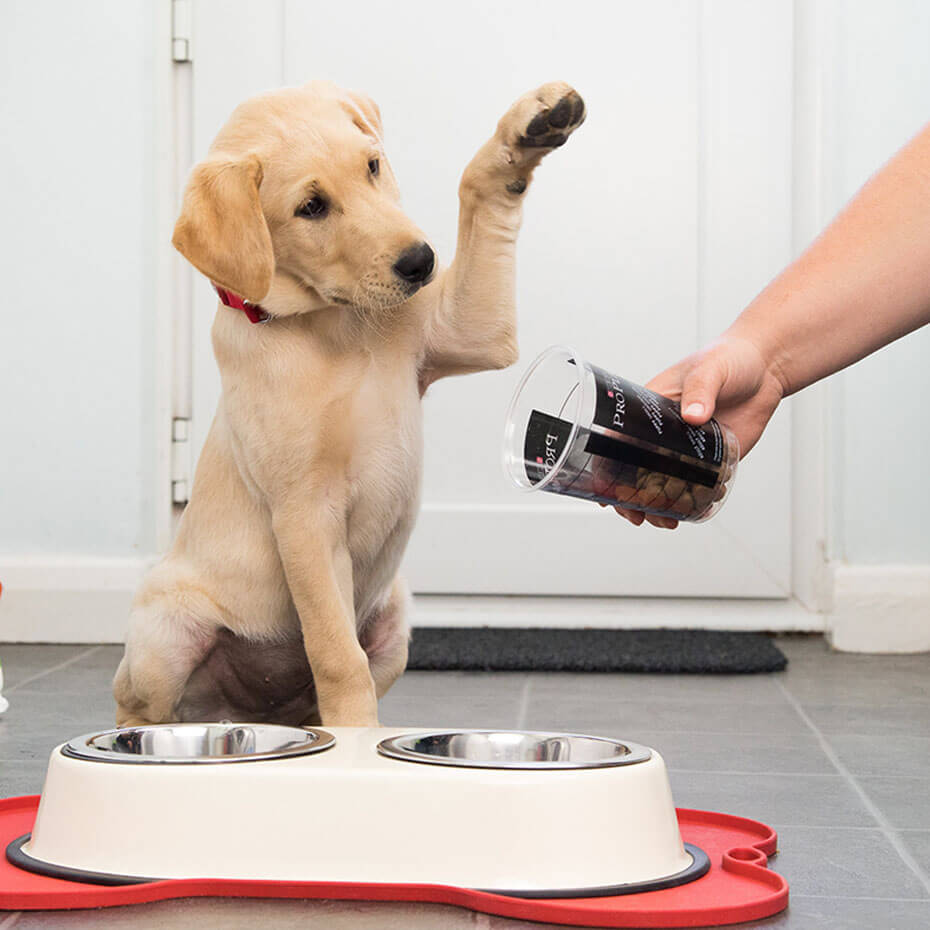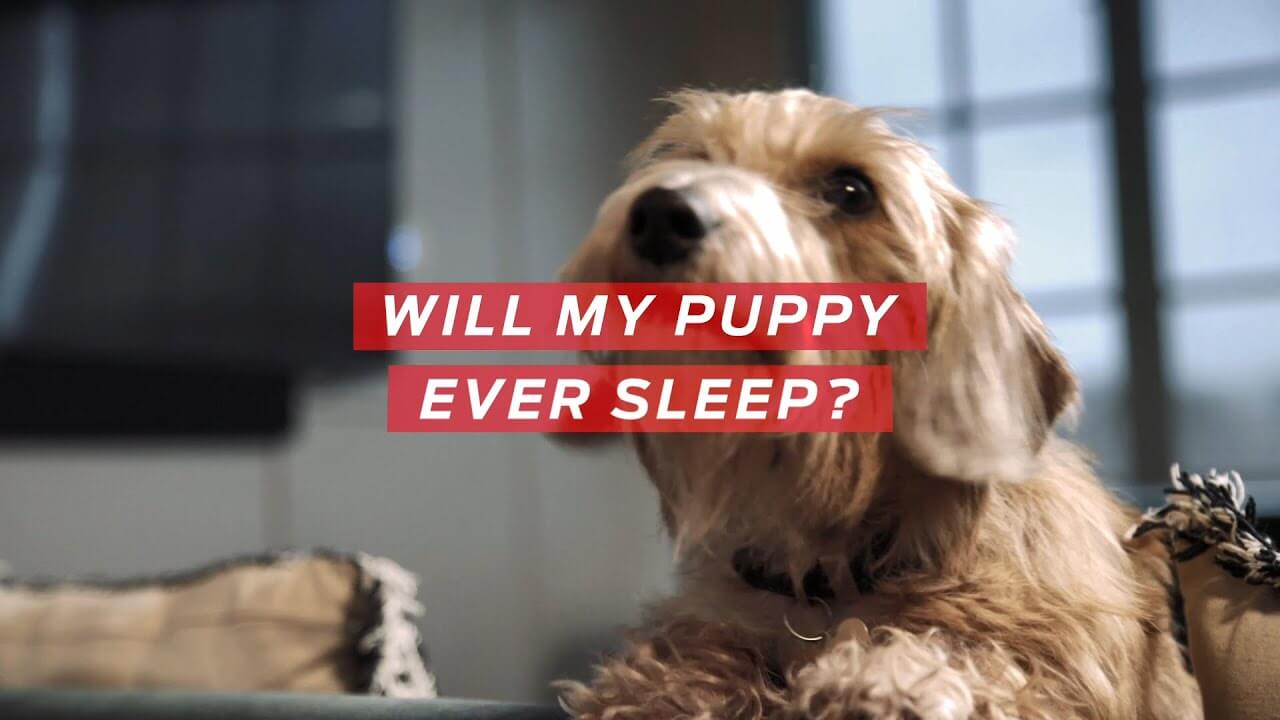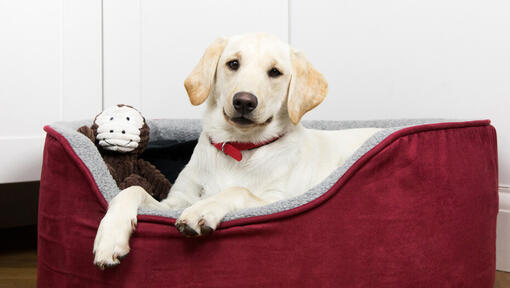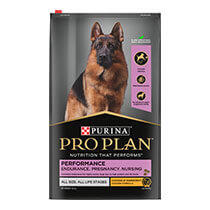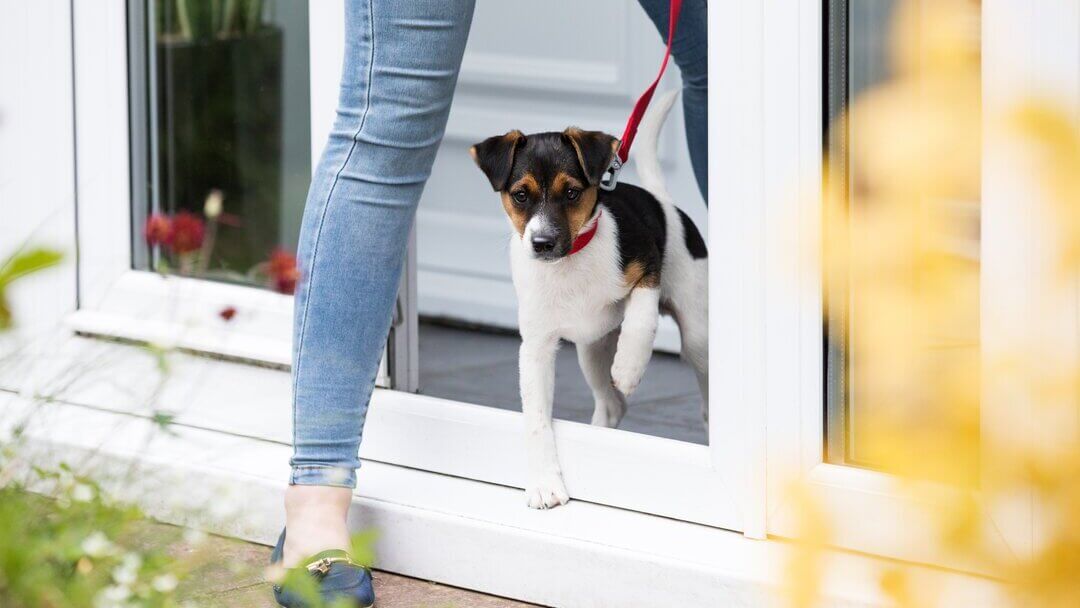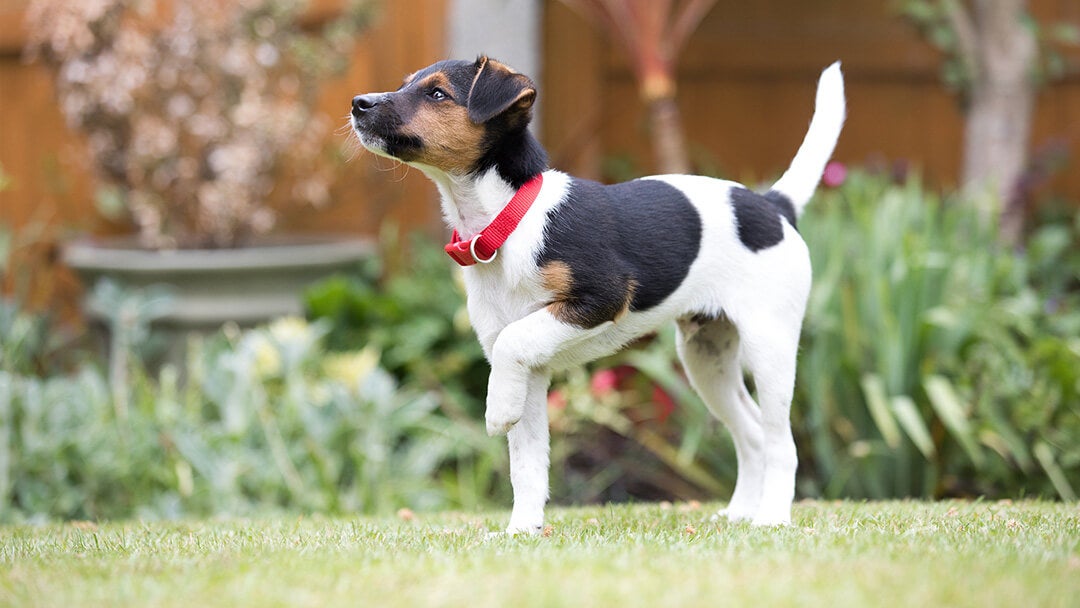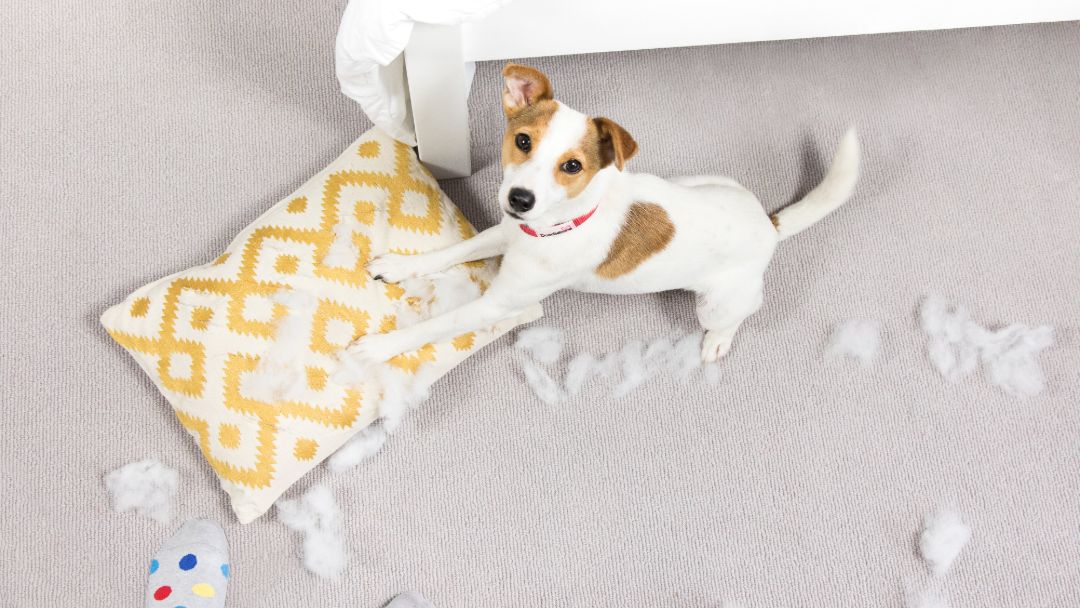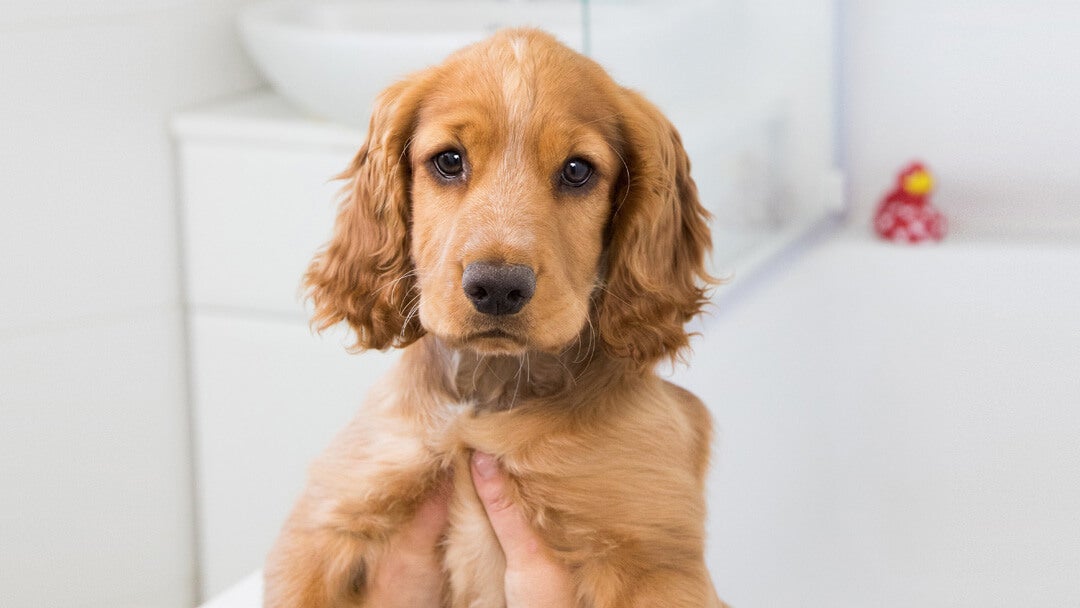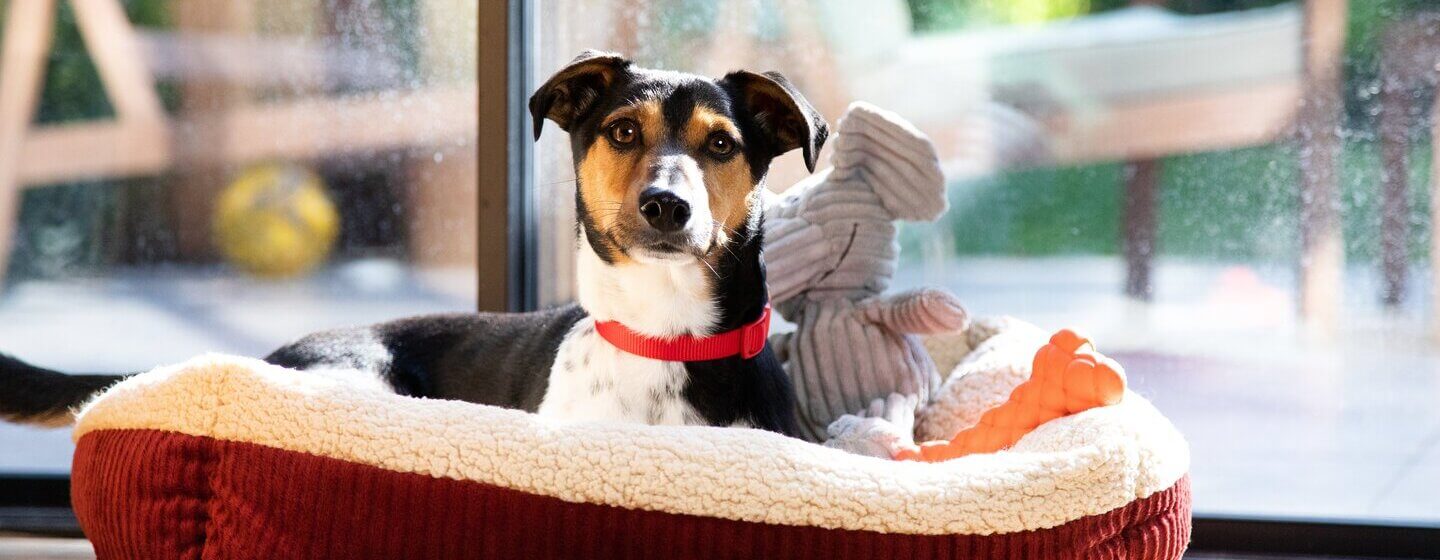
When you get a new puppy figuring out their sleeping arrangements can be difficult. Find out what the best options for puppy beds are and if you really should let them sleep in your bed with you.
With all that playing, your puppy will need lots of rest, so appropriate puppy sleeping arrangements should be made. Avoid giving into temptation and allowing your new pup to sleep on your bed, even on the first night with your new puppy. It will quickly become a habit that you later might regret when they won’t be able to sleep alone! It’s best to make them a comfy nest that they can call their own, where they can be snug at puppy bedtime.
If you’re using a puppy crate then a cosy bed can be put inside, with layers of newspaper underneath to soak up any spilled water or wee accidents. The puppy crate, or bed (if you’re using a bed on its own), should be placed in a quiet corner, somewhere where you can keep an eye on your puppy when they are inside, and out of the way of kids playing and general noise, so they can have a good rest. A corner of the kitchen will allow easy mopping up of any spills. If you’re placing the puppy crate on the floor elsewhere on carpet, some newspaper or (chew-proof!) waterproof pads underneath is a good idea.
If you already have other dogs in the house, then placing your puppy’s crate alongside their sleeping area will give your new pup some reassuring company. However, if your existing pets are wary or upset about their new housemate, then it’s better to keep puppy’s sleeping arrangements separate, until they’re used to each other and are happy snuggling up or playing.
What to expect on the first night home with your puppy
On arrival in their new home, your puppy may take a while to settle in. This is likely to have been the first time they have been away from mum and their siblings. During the day, the activities of playing and sleeping might mean your puppy has been distracted and has not noticed that his previous doggy family are no longer around. When it comes to night-time though, it's dark and long, and it’s normal that your pup may get upset when you spend your first night with your new puppy. As a general rule, puppy first nights can be tricky – but they’re easier to navigate if you have some idea of what to expect.
First of all, new owners should fully expect to have disrupted sleep for a few nights or even weeks. Anything else is unrealistic and sets them and their puppy up for failure. Plan your new arrival for a time when you can take this into consideration.
Thankfully we have come a long way from the “shut them in the kitchen and let them cry till they fall asleep” thinking which was both unintentionally cruel and also can lead to attachment issues and potentially to separation related problems - as one of the very first things the puppy learns is that these new people do leave you alone and it’s scary.
You are trying to build a relationship and a trust between you and your puppy that is going to last for your whole life together, and making your puppy’s first nights with you as stress-free as possible is going to help with that.
Puppy sleep training happens little by little. When it comes to your puppy’s bedtime, for the first week or so, it's preferable that they sleep in your bedroom with you. This way, he or she has your reassuring presence nearby, and there are sounds and smells that they will be familiar with. A puppy crate is ideal for this stage: you can either take this up to your room at night, or have a second one that's kept in the bedroom. Ensure that puppy gets out to the loo just before bedtime. When settling into bed in the puppy crate, reward positive quiet behaviour in the bed. If your puppy gets upset or you hear your puppy crying at night, do not shout or punish your puppy – this is normal - they are just learning how to be independent. Give them a while to settle down with your presence nearby. Puppy crate training at night is a gradual process, and it’s important to be patient. If your puppy is crying all night, it can be unsettling for you also, but with care, structure and patience, you will be able to get your puppy into a good sleep routine.
Watch our Purina experts explain why your puppy might be having trouble sleeping and what you can do to help them enjoy a restful night.
How to get a puppy to sleep
During the night, if your puppy is unsettled, take them quietly outside to the toilet and back in to their bed, but do not engage in chatting or play behaviour. Keep everything as calm as possible.
As the puppy sleep training process progresses and they get used to sleeping in their bed, you can start to move the puppy crate towards the door, gradually to be moved out of the room to where you want their new sleeping area to be. It is best to try to accomplish this within the first week of having your new puppy.
Puppy first night checklist
- Make sure any bed you buy is safe with nothing that can be chewed or swallowed easily.
- Have something soft, cushioned, warm and easy to get in and out of – no steps or high sides, which can strain, injure or damage immature joints, bones and muscles/ligaments.
- Puppies often like to feel contained and secure – so if possible buy something small and replaceable rather than something huge that your puppy will eventually grow into. There’s time for a beautiful expensive bed when your puppy is all grown up, toilet trained and less likely to chew!
- Put the bed/crate in a quiet part of the room where the puppy will not be disturbed by people coming in and out – and make a hard and fast rule that no one disturbs the puppy when they are sleeping.
• Something waterproof underneath the bed (a cut open bin liner and newspaper will do the job) can be useful in case of toilet training accidents but you should be supervising these times to ensure your puppy doesn’t get the chance to make a mistake!
Like us, puppies sleep better when they are relaxed, comfortable and feel secure – and knowing that we are providing that for our dogs, means we can sleep easy too!
Benefits of a dog bed
Any good dog bed will provide your dog with a soft place to rest after a long day of activity and fun. As dogs move into their senior years, this becomes more important.
Dog beds can help keep your dog warm, which is especially important during the winter when the bed keeps your dog from direct contact with the cold floor.
Just like most people, your dog will sometimes want a place to relax while they are on their own. A comfortable dog bed allows your dog to get some alone time when they need it.
Other considerations when choosing a dog bed for your growing pup
Puppy beds need to give ample room for the growing pup, and if you’re using a puppy crate, be able to fit comfortably inside. If you’ve ever looked at your dog while they are sleeping, then you’ve probably noticed that dogs can sleep in various positions: on their back, on their side, curled up or stretched out. It’s important to take this into consideration when choosing which dog bed is right for your dog.
It’s very important that the dog bed you choose allows your dog to move around comfortably while staying within the confines of the bed. If the bed is big enough for your dog to lie in while curled up, but too small to fit in with their limbs fully outstretched, then your dog might become uncomfortable.
It’s best to put your dog’s bed in a place that is warm and free from draughts. You might also want to have multiple dog beds in the house so your dog can choose where they sleep. For example, a dog bed in a quiet part of the house could be nice for your dog when they want some alone time, but also putting a bed in the living room can be nice when your dog wants to rest near family.
With so many options, choosing which dog bed is the right one for your dog isn’t always the easiest of tasks. However, by following the tips in the article and making sure you assess all the possible options, you can give your dog a comfortable, cosy place to rest that they’ll love you even more for.
Set up a bed for your puppy beside yours. An indoor puppy crate* can be invaluable here as it means your puppy can be beside you but still be safely contained so both of you have a chance to get some sleep – and your puppy begins to learn that night times are for settling down and sleeping. Line the puppy crate with veterinary bedding (which is warm, comfortable and washable) and ideally include something that came from the breeder such as a blanket that smells of mum and security.
A big advantage of a puppy crate is that once your puppy is settled, you can gradually move this to wherever you ultimately want your puppy to spend the night – they do not have to stay in the bedroom forever - but for now, they need the comfort of being beside you.
The puppy will have the comfort of your presence, you are beginning the bonding process and building trust, and even better, you will know if your puppy wakes and needs to go out to the toilet – which will make your toilet training even quicker and easier too.
If you choose not to use a puppy crate, have a soft, warm, safe bed that you can put on the floor beside you but ideally set up a play pen or a barrier around it so your puppy is more likely to settle down and sleep – and so get into a sleeping routine – and can’t wander off, chew things, play, or use various parts of your bedroom as a toilet! This keeps your puppy safe – and means you don’t stay awake all night worrying about what they are doing!
During the day your puppy needs plenty of opportunity to be able to sleep too. Puppies have bursts of energy followed by frequent naps to recover – so they need somewhere comfortable and quiet to sleep, while still being close to you. You can set up a crate or a playpen with soft veterinary bedding in every room you are likely to spend time – or more likely you can get a bed to put in a quiet area of the room, as you will be there to supervise daytime napping.
While for most new owners, the early nights pass fairly incident free, what can you do if things don’t go entirely to plan?
Make sure you are setting your puppy up to succeed. Your puppy is more likely to sleep if they are tired, so in the hour before bed, have a game, play session or do some training (not too active but still engaging - you want them tired not hyper-excited!).
Don’t make their final meal of the day too late, and take them out to go to the toilet last thing before bedtime so you know that the need to pee or poo will not keep them awake. Be prepared to wait until you know your puppy has gone to the toilet (and of course has been rewarded for doing so). This can take some time, as puppies can get distracted by the great outdoors and forget what it is that they are out there for so be patient!
Having made sure you are ready for bed beforehand, you can put your puppy in the crate beside you – and immediately put the light out to go to sleep (so the puppy doesn’t think that you are awake so there’s the chance for more playtime!).
On the first night with the new puppy, you might notice him squeaking or even barking – as his body clock isn’t in a routine yet and night-times are a bit boring! You can soothe him with your voice – and even put your hand on the crate – but give him the space and the time to settle down (it may be worth warning your neighbours in advance if they are close by – and buying them some wine, chocolate and earplugs!).
While you can comfort your puppy in this way, don’t be tempted to get them out and cuddle them or play with them – otherwise they have just learnt the perfect way to make night times more fun and so will be even more persistent in trying to get your attention!
If they really won’t settle (and you really have been patient about this!), you can put a Kong toy with something tasty and puppy-appropriate smeared around the edge and inside, to encourage them to chew. This will distract from the barking but also relax and tire the puppy so they are more likely to fall asleep.
Having something like a blanket or a towel in the crate that smells of their mother and littermates can often help them feel secure and so sleep better. Give something to the breeder when you visit the puppies and ask them to keep it in the puppy pen until you bring your puppy home for the first night sleep.
Some puppies feel more secure when they can tunnel into a bed or be surrounded by soft sides (think about how they sleep bundled up with their littermates in a puppy pile) so consider getting a small doughnut bed to put in the crate).
If you do have to get up in the night to take them outside to the toilet (as you may well in the first couple of weeks), make this as boring as possible with no interactions beyond rewarding successful toileting.
It is way too late to tell you this but ensuring you get your puppy from a breeder who rears in the home and so who has puppies that are already used to a domestic sleep/wake routine will make the puppy’s first nights so much easier.
Many people do not like the idea of using a puppy crate – and there is no doubt they can be misused by people who use them as a way to shut their dog away for hours on end – but used properly, a crate is an invaluable training aid that can help you keep your puppy safe, simplify your toilet training, and make sure you both get some sleep in those early days of your life together.
It is vitally important that you do it right though – and thankfully very simple.
First of all, make sure you get a crate the right size for your puppy – and this may mean you upgrade it several times as your dog grows. At all times, the crate should be big enough that your puppy can stand up comfortably, lie stretched out and be able to get up and turn round. It shouldn’t be so big however that they can use one end for sleeping and the other end as a toilet!
Make the crate really comfortable - line it with veterinary bedding that goes up the sides to keep the pup warm and comfortable. Then introduce it slowly to your puppy. This is really important. On your puppy’s first night, you can’t just stick him in there and expect him to be happy about it!
Leave the door open – and when you are playing with the pup, encourage them to go into the crate by their own choice – possibly to chase a toy, or to get a treat. You are teaching them that the crate is a safe and rewarding place to be. Don’t shut the door yet!
Feed your puppy their meals in the crate and while they are eating you can shut the door for a few minutes. Whenever the pup is sleepy, put him in the crate beside you, so they feel comfortable about sleeping in there. Make a hard and fast rule that no-one ever disturbs the puppy when they are in the crate. It’s important especially on the first night with the new puppy to teach him that this is his safe haven away from the craziness of his new life where he can totally relax. Always stay close by however, especially in the early days, so your puppy doesn’t feel abandoned or ‘locked away’ from you.
Once the puppy is happy and relaxed about sleeping in the crate and going in and out of it, they can be put in there to spend the night – and for most pups this doesn’t take long at all. Every pup is different thought and so you need to be sensitive to your own dog and not rush this.
Thankfully many breeders will have already crate trained their puppies (as it is a lot easier for them not to have puppies running riot around their house) and this will make things so much easier for you and allow you to start as you mean to go on – so it may well be something you want to ask the breeder right at the very start.
Remember, the crate is a place of safety and security designed to help you manage the puppy’s first nights home – it is not something to use for long periods of time. Your puppy should spend their life out and about with you, learning about this new world and bonding with you – not shut in a crate!
NOTE: If your puppy wears a collar in the house, always take it off before you put them in the crate.
For more puppy advice and guides, take a look at our content hub and discover our top tips for socialising your puppy.
